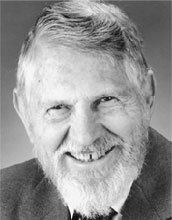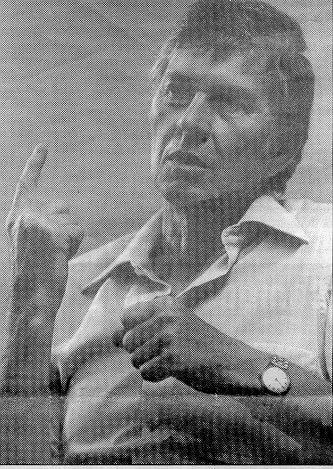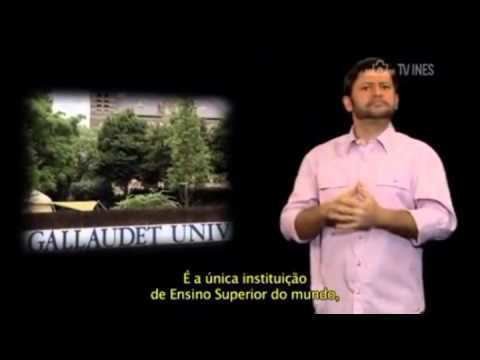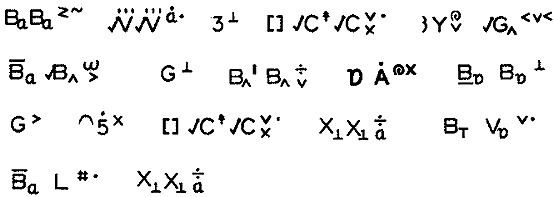Name William Stokoe | ||
 | ||
Born July 21, 1919New Hampshire, USA ( 1919-07-21 ) Known for Redefining language, establishing American Sign Language as a unique language, Stokoe notation Died April 4, 2000, Chevy Chase Books Sign Language Structure, A Dictionary of Americ, Language in hand, Gesture and the Nature of, Semiotics and Human Si | ||
Deaf history month william stokoe
William C. Stokoe, Jr. ( ; July 21, 1919 in New Hampshire – April 4, 2000 in Chevy Chase, Maryland), a long-time professor at Gallaudet University, was an American linguist. His research on American Sign Language (ASL) revolutionized the understanding of ASL in the United States and sign languages throughout the world and had a profound impact on deaf culture, deaf education, and sign language teaching and interpreting. Stokoe's work led to a widespread recognition that sign languages are true languages, exhibiting syntax and morphology, and are not mere systems of gesture. This work thus redefined "language" itself, and influenced thinking in theoretical linguistics, philosophy, psychology, anthropology, neural studies, and even jurisprudence.
Contents
- Deaf history month william stokoe
- Tv ines william stokoe
- Early life
- Education
- Career
- Sign language research
- Notation system
- Impact
- References

Tv ines william stokoe
Early life

William C. Stokoe, Jr. was born July 21, 1919, in New Hampshire and died April 4, 2000, in Chevy Chase, Maryland.
Education

Stokoe graduated from Cornell University in Ithaca, NY in 1941, from where in 1946 he earned his Ph.D. in English, specifically medieval literature. From there, he became an instructor of English at Wells College in Aurora, NY.
Career

From 1955 to 1970 he served as a professor and chairman of the English department at Gallaudet University, after being recruited to the position by Dean George Detmold. He published Sign Language Structure (1960) and co-authored along with Dorothy C. Casterline and Carl G. Croneberg, A Dictionary of American Sign Language on Linguistic Principles (1965). The latter was the first place the term American Sign Language was ever formally used. He also started the academic journal Sign Language Studies in 1972, which he edited until 1996. Stokoe's final book, Language in Hand, was published in 2001, after his death.
Though the relationship between Stokoe and Gallaudet was not always one of complete support (Gallaudet closed his Linguistics Research Laboratory, wherein he carried out the studies that would lead him to declare ASL a fully formed and legitimate language, in 1984, after he retired), the university awarded him an honorary doctorate in 1988.
Sign language research
Stokoe researched American Sign Language (ASL) extensively while he worked at Gallaudet University. He coined the term cherology, the equivalent of phonology for sign language. However, sign language linguists, of which he was the first, now generally use the term "phonology" for signed languages.
Notation system
Stokoe invented a written notation for sign language (now called Stokoe notation) as ASL had no written form at the time. Unlike SignWriting, which was developed later, it is not pictographic, but drew heavily on the Latin alphabet.
Thus the written form of the sign for 'mother' looks like
͜ 5xThe ' ͜ ' indicates that it is signed at the chin, the '5' that is uses a spread hand (the '5' of ASL), and the 'x' that the thumb touches the chin. Stokoe coined the terms tab, dez, and sig, meaning sign location, handshape and motion, to indicate different categories of phonemes in ASL. The Stokoe notation system has been used for other sign languages, but is mostly restricted to linguists and academics (as yet, no notation system for a sign language has gained significant use).
Impact
Through the publication of his work, he was instrumental in changing the perception of ASL from that of a broken or simplified version of English to that of a complex and thriving natural language in its own right with an independent syntax and grammar as functional and powerful as any found in the oral languages of the world. Because he raised the prestige of ASL in academic and educational circles, he is considered a hero in the Deaf community.
